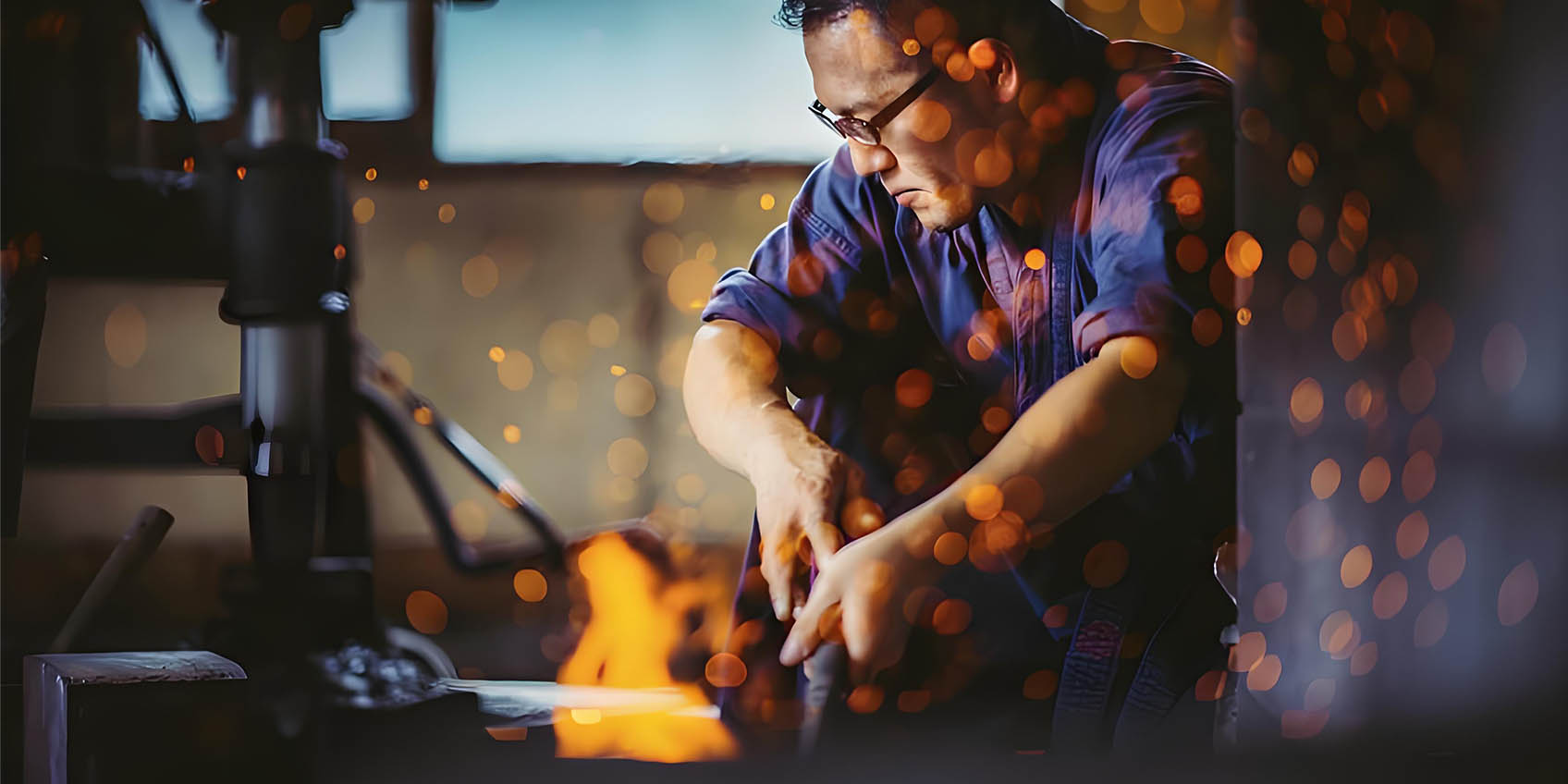
The Art of Japanese Sword Forging: Craftsmanship and Tradition
The forging of a Japanese sword begins with the selection of materials and the smelting of tamahagane. Tamahagane, also known as 'tamahagane' or 'wakou,' is a special type of steel produced using traditional low-temperature smelting methods in regions like Shimane Prefecture, Japan.
Although this method may appear primitive compared to modern high-temperature steelmaking, it preserves the high quality and exceptional toughness of the steel. The smelting process takes place in traditional furnaces known as 'furnace,' where every step is meticulously controlled to ensure the purity and texture of the steel.
Initial Forging (Maru-dome):
This is the first critical step in forging a samurai sword. The tamahagane is heated until it is red-hot and then repeatedly hammered to remove impurities such as sulfur and excess carbon. During the forging process, the steel is folded and hammered repeatedly to enhance its flexibility and toughness. Each folding and hammering increases the layers of steel. For example, after the tenth folding, the steel can have layers up to 1,024 or more. This process not only purifies the steel but also refines its grain structure, creating the distinctive patterns seen on samurai swords.

Quenching (Mizuheshi):
After the steel has been forged into a blade, the next crucial heat treatment step is called 'mizuheshi,' or quenching. During this process, the blade is reheated and then rapidly immersed in water for quick cooling. This rapid cooling helps to increase the hardness of the steel and set its crystalline structure, ensuring that the blade remains sharp and durable. The quenching process requires precise control of temperature and timing, and experienced swordsmiths carefully monitor these parameters to achieve the desired hardness and toughness of the blade.
Polishing and Assembly:
After quenching, the blade undergoes meticulous polishing to reveal its unique patterns and surface luster. The blade is then fitted with a handle (tsuka) and scabbard (saya), crafted by skilled metalworkers (koshirae craftsmen). These components not only serve functional purposes but also enhance the aesthetic appeal and balance of the katana. The entire process, from material selection to final assembly, is deeply influenced by tradition and craftsmanship, reflecting centuries of Japanese swordsmithing heritage and cultural significance.

Conclusion:
With the rise of modern culture and the increasing demand for personalization, cool katana designs have become increasingly diverse and customized. While traditional swordsmiths preserve classic designs, they also incorporate modern elements and personalized requirements.
Advances in modern manufacturing technology and global influences have expanded the material choices for katana making, ranging from traditional tamahagane to stainless steel, high-carbon steel, and even alloy materials. These new materials not only enhance the durability and cutting capabilities of the blade but also provide swordsmiths with more creative possibilities to meet the diverse needs and aesthetic preferences of users.
This trend toward diversification and personalization not only signifies technological progress but also reflects a deep respect for traditional craftsmanship and a pursuit of personalized demands. Whether in traditional-style Japanese swords or innovative modern designs, each sword carries the dedication and craftsmanship of its swordsmith, embodying a perfect blend of cultural heritage and artistic craftsmanship.
Our shop offers a wide range of customized services
https://www.coolkatana.com/products/custom-sword
At some events, fans demonstrate their swordsmanship skills, paying tribute to anime's legendary battles. Conventions even hold swordsmanship competitions, letting enthusiasts showcase their passion and creativity with these iconic weapons. Certain anime weapons hold special significance for fans, influencing anime swordsmanship and sparking interest in related merchandise. Celebrations at various anime events further boost their popularity. These weapons symbolize strength and courage, leaving a lasting mark on the anime world.
Comments on “Japanese Sword Forging: Craftsmanship and Tradition”